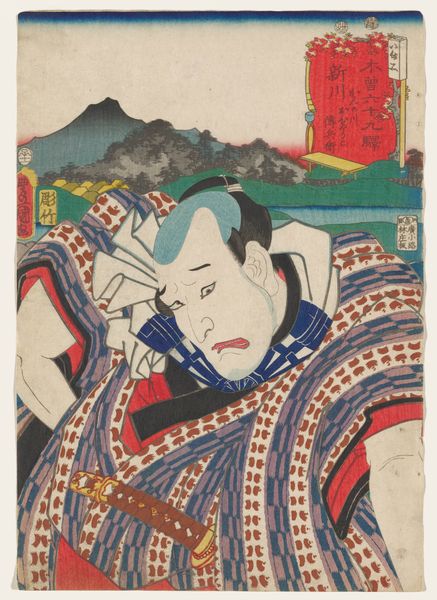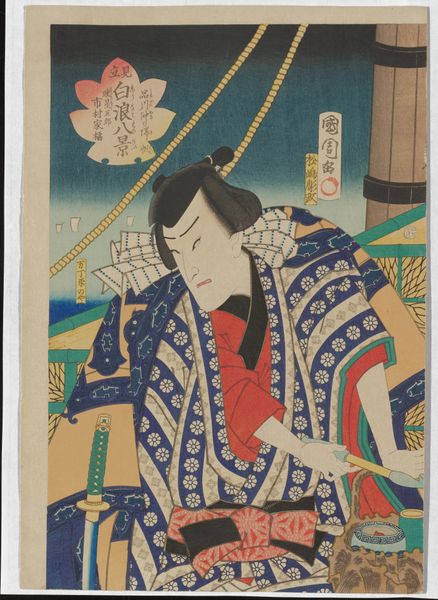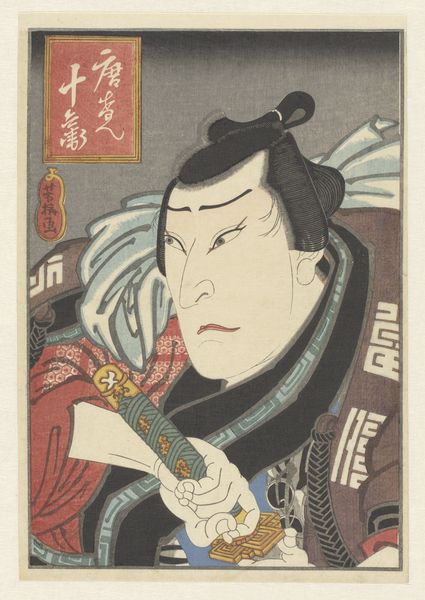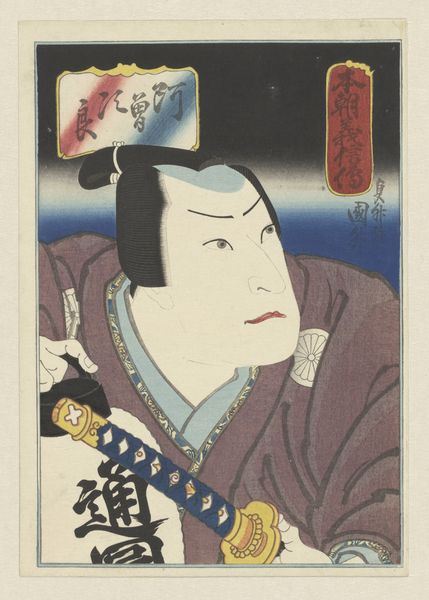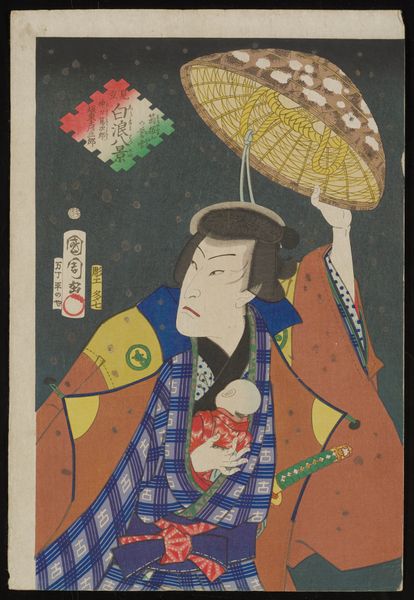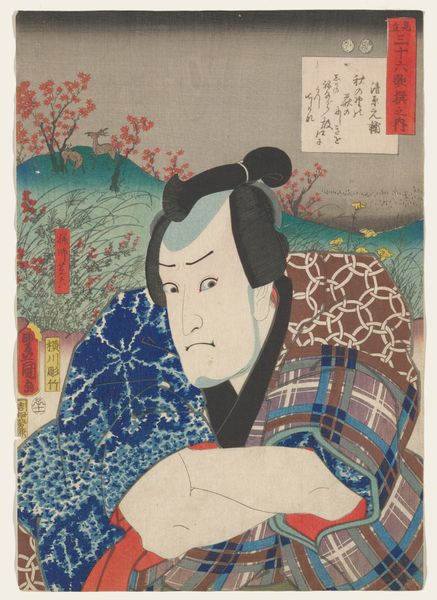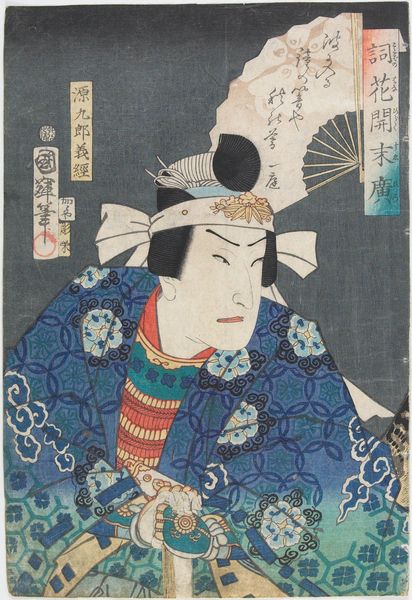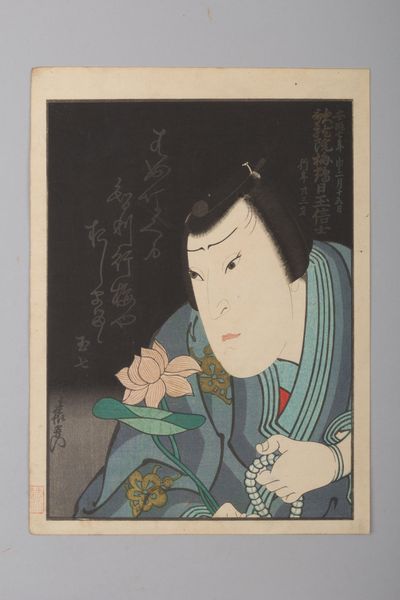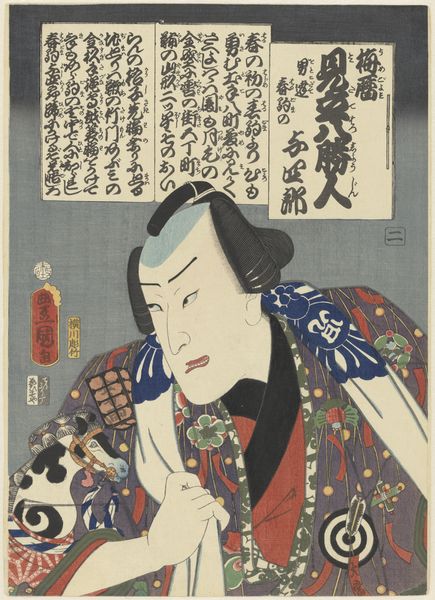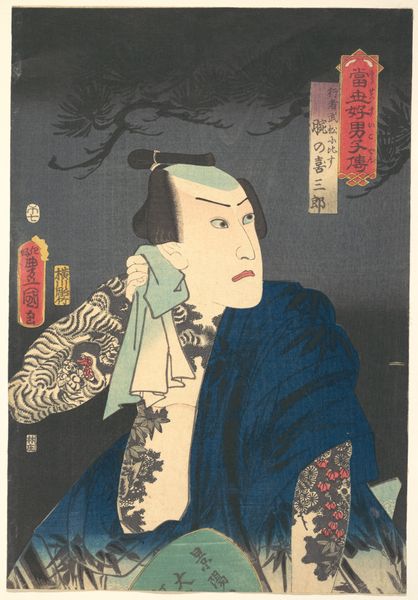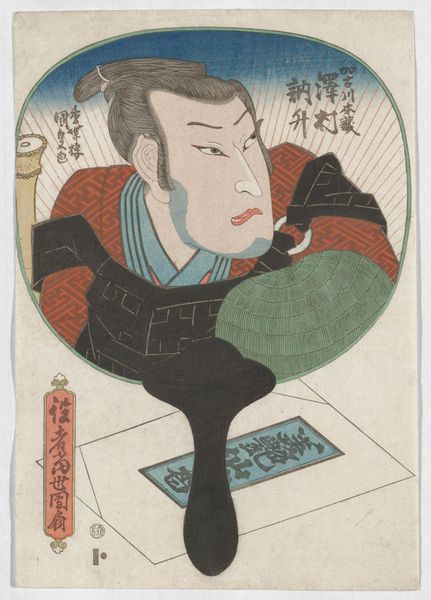
Descending Geese at Shirahige- Actor Ichikawa Kuzō III as Inga Kozō Rokunosuke Possibly 1865 - 1867
0:00
0:00
print, ink, woodblock-print
#
portrait
#
water colours
# print
#
asian-art
#
ukiyo-e
#
figuration
#
ink
#
woodblock-print
Dimensions: 15 1/8 × 10 5/16 in. (38.42 × 26.19 cm) (sheet, vertical ōban)
Copyright: Public Domain
Curator: Look at this striking woodblock print titled "Descending Geese at Shirahige- Actor Ichikawa Kuzō III as Inga Kozō Rokunosuke." It’s likely from around 1865-1867, created by Toyohara Kunichika. Editor: The mood is immediately dramatic, wouldn’t you say? There's something tense in the actor's downward glance and the angle of the sword he is holding. I find the composition unsettling and intriguing. Curator: Absolutely. Ukiyo-e prints often captured popular kabuki actors in their celebrated roles, but it goes beyond a mere portrait. Notice the geese flying overhead? Editor: Yes, and it's an interesting placement. Are the geese symbolic of a hasty retreat, perhaps a reflection of the character's circumstances in the play? The whole image appears very dynamic, rather than static. Curator: Indeed. Descending geese are associated with autumn and transience, adding a layer of melancholic beauty, reflecting upon fleeting time. The playwright cleverly layered on symbolism using a rich tapestry of motifs, connecting personal emotionality with social commentary. This imagery helped people understand something about that particular point in time through art. Editor: Fascinating! The bold patterns of the robe are really drawing me in too – the checkered pattern is so arresting, especially combined with the small floral details. Does the design point to the character's status, perhaps hinting at something beneath the surface? I wonder what part this character plays. Curator: This costume signifies a lower-class social position, an aesthetic code often utilized to humanize those whom dominant culture dehumanizes, but that allows the wearer of the costume to be easily recognized by an audience. That recognition has consequences. As social conditions worsen and anxieties rise, marginalized actors and artworks risk becoming targets for forces aligned against certain social messages and positions. Editor: Looking closely at this woodblock print has shifted my understanding of not only ukiyo-e but how cultural messaging shifts through its creation, display, and inevitable analysis by folks like us. Curator: Right. And those flying geese keep telling me that understanding the past is not always a journey towards simple solutions; it often creates far more complex visions.
Comments
minneapolisinstituteofart almost 2 years ago
⋮
Since the 17th century, The Eight Views–originally referring to scenic spots around the Chinese Xiao and Xiang Rivers–has been a well-established theme in Japanese art. Here, the eight locales are taken from famous places in the city of Edo (present-day Tokyo) and are juxtaposed with popular actors in the roles of well-known thieves and robbers. Kabuki plays on the underworld were popular during the mid-19th century, especially during the hot summer months when this series was put on the market, as the storylines were meant to give viewers a chill.
Join the conversation
Join millions of artists and users on Artera today and experience the ultimate creative platform.

